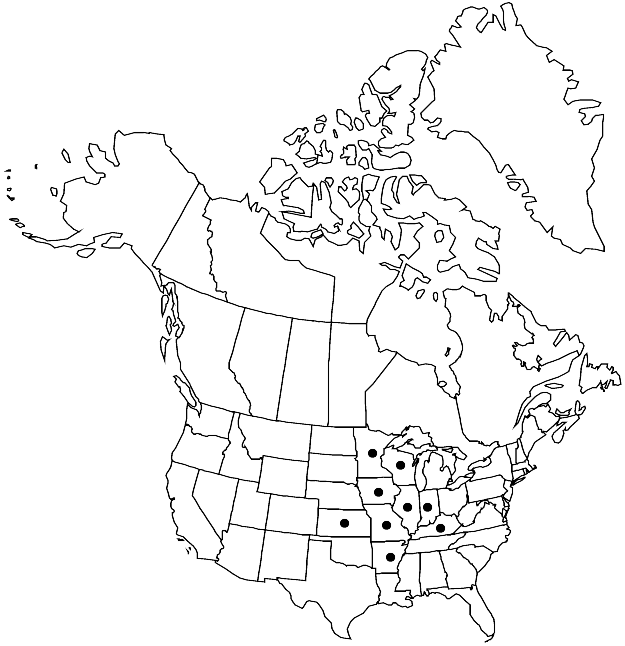Orthotrichum parvulum
J. Linn. Soc., Bot. 8: 25. 1864.
Plants to 1 cm, dull. Stem leaves stiff, erect-appressed when dry, oblong-lanceolate to lanceolate, 2–3.5 mm; margins plane or weakly recurved, entire; apex blunt to obtuse; basal laminal cells quadrate to rectangular, walls thin, not nodose; distal cells 10–15 µm, 1-stratose; papillae 1 or 2 per cell, conic, small. Specialized asexual reproduction absent. Sexual condition gonioautoicous. Seta 0.5–0.8 mm. Capsule immersed, oblong, 1.2–1.9 mm, distinctly 8-ribbed, constricted below mouth when dry; stomata immersed; peristome single or rarely with fugacious endostome; prostome absent; exostome teeth 16, incurved-erect to spreading-recurved when dry, reticulate-papillose; endostome segments absent or 8, not well developed, of 1 row of cells, short, smooth. Calyptra oblong-conic, smooth, hairy, hairs papillose. Spores 12–19 µm.
Habitat: Calcareous rock
Elevation: low elevations (90-150 m)
Distribution

Ark., Ill., Ind., Iowa, Kans., Ky., Minn., Mo., Wis.
Discussion
Orthotrichum parvulum is most frequent in the central highlands of Missouri and Arkansas. The species differs from O. strangulatum (with 2–7-stratose leaf margins) and O. lescurii (with revolute, 1-stratose leaf margins) in having plane leaf margins and completely 1-stratose distal laminal cells. The stomata are found in the distal capsule, almost covered by subsidiary cells, and the endostome segments are hyaline.
Selected References
None.